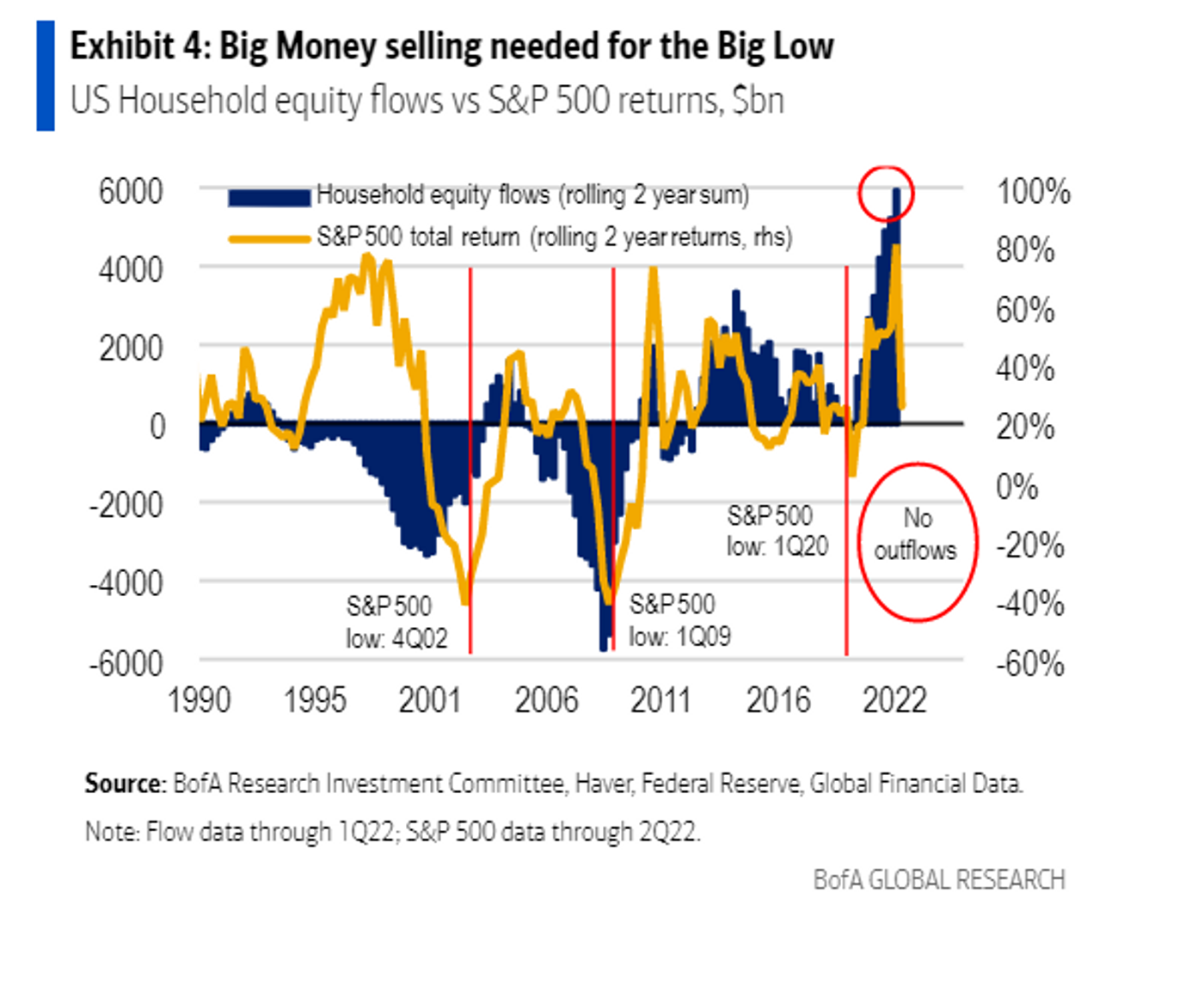A number of market analysts observe that historically, an index can retrace a very significant amount (up to two-thirds; cf. Colby) while still in a primary trend. Some interpret the Dow Theory as supporting this:
…signals that occur on one index must match or correspond with the signals on the other. If one index, such as the Dow Jones Industrial Average, is confirming a new primary uptrend, but another index remains in a primary downward trend, traders should not assume that a new trend has begun (Investopedia).
BofA Global believes this to be the case for a very specific reason: household majority position of the overall market that has not sold, yet:
U.S. households now own roughly 52% of the stock market. And a look at three major market plunges since 2000 (see chart) shows that equities only bottomed a few quarters after significant selling activity from households occurred.
BofA’s research investment team said a common refrain from July investor meetings was: “Everybody’s already bearish, might as well buy.” But they still favor cash, credit, and equities, in that order. Or at least until households, the “decision-maker,” decides to make a move and sell.
Gated article but full post access here.

